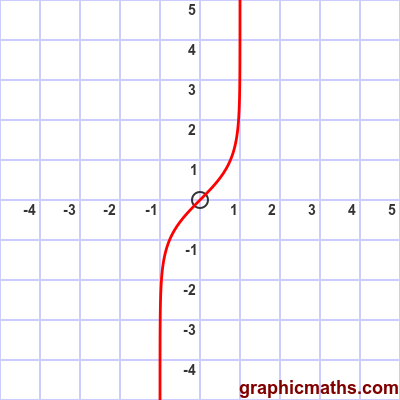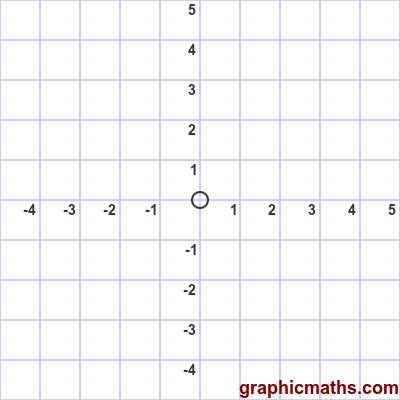artanh function
Categories: hyperbolic functions

The artanh function is a hyperbolic function. It is the inverse of the tanh, and is also known as the inverse hyperbolic tangent function.
Why is it called the artanh rather than the arctanh? See here.
Equation and graph
The artanh function is defined as the inverse of tanh, ie if:
$$ x = \tanh y $$
then:
$$ y = \operatorname{artanh} x $$
Here is a graph of the function:

The function is only valid for -1 < x < 1.
artanh as inverse of tanh
This animation illustrates the relationship between the tanh function and the artanh function:

The first, blue, curve is the tanh function.
The grey dashed line is the line $y=x$.
The second, red, curve is the artanh function. As with any inverse function, it is identical to the original function reflected in the line $y=x$.
Logarithm formula for artanh
There is a also a formula for finding artanh directly:
$$ \operatorname{artanh} x =\frac12\ln\left(\frac{1+x}{1-x}\right) $$
Here is a proof of the logarithm formula for artanh. This follows similar lines to the proof for arsinh.
We will use:
$$ u = \operatorname{artanh}{x} $$
The tanh of u will be x, because tanh is the inverse of artanh:
$$ x = \tanh {u} $$
One form of the formula for tanh is:
$$ \tanh{u} = \frac{e^{2u}-1}{e^{2u}+1} $$
This gives us:
$$ x = \tanh{u} = \frac{e^{2u}-1}{e^{2u}+1} $$
Multiplying both sides by $(e^{2u}+1)$ gives:
$$ ({e^{2u}+1})x = e^{2u} - 1 $$
Rearranging:
$$ ({e^{2u}+1})x - e^{2u} + 1 = 0 $$
So:
$$ e^{2u}(x - 1) + 1 + x = 0 $$
$$ e^{2u}(x - 1) = -(1 + x) $$
$$ e^{2u} = -\frac{1 + x}{x - 1} = \frac{1 + x}{1-x} $$
Taking the log of both sides:
$$ 2u = \ln\left(\frac{1+x}{1-x}\right) $$
This gives the required result:
$$ u = \operatorname{artanh} x =\frac12\ln\left(\frac{1+x}{1-x}\right) $$
See also

Join the GraphicMaths Newletter
Sign up using this form to receive an email when new content is added:
Popular tags
adder adjacency matrix alu and gate angle answers area argand diagram binary maths cartesian equation chain rule chord circle cofactor combinations complex modulus complex polygon complex power complex root cosh cosine cosine rule cpu cube decagon demorgans law derivative determinant diagonal directrix dodecagon eigenvalue eigenvector ellipse equilateral triangle euler eulers formula exercises exponent exponential exterior angle first principles flip-flop focus gabriels horn gradient graph hendecagon heptagon hexagon horizontal hyperbola hyperbolic function hyperbolic functions infinity integration by parts integration by substitution interior angle inverse hyperbolic function inverse matrix irrational irregular polygon isosceles trapezium isosceles triangle kite koch curve l system line integral locus maclaurin series major axis matrix matrix algebra mean minor axis n choose r nand gate newton raphson method nonagon nor gate normal normal distribution not gate octagon or gate parabola parallelogram parametric equation pentagon perimeter permutations polar coordinates polynomial power probability probability distribution product rule proof pythagoras proof quadrilateral questions radians radius rectangle regular polygon rhombus root sech segment set set-reset flip-flop sine sine rule sinh sloping lines solving equations solving triangles square standard curves standard deviation star polygon statistics straight line graphs surface of revolution symmetry tangent tanh transformation transformations trapezium triangle turtle graphics variance vertical volume volume of revolution xnor gate xor gate